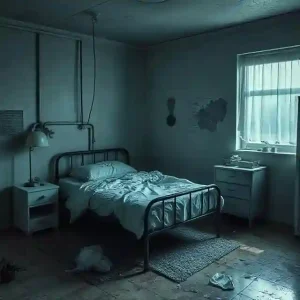Think of a world in which you could build furniture, toys for your children, and obsolete parts. You no longer have to search for markets online and offline to look for the vague things you need. All you have to do is get green plastic or rubber, feed it to a 3D printer, apply your model design using CAD software and let the technology take care of the rest.
We now live in a wonderful world of three dimensions. Flexible 3D printing technology was introduced in the 1980s to make 3D models not using paper and ink but instead of using solid materials such as plastic and rubber to print and produce solid 3D object models. Now after almost 40 years, Pakistan is finally using technology, not only to create domestic items but to use technology at the industrial, educational, health and engineering level again.
The reason for its recent popularity is that 3D printed object processing is achieved using add-on processes in which layers of sequential objects are laid down until the object is created. Each of these layers is a cut-out lump of an object.
3D printing is the opposite of molding, which involves cutting or removing a piece of metal or plastic, for example, a milling machine. The 3D printer enables you to produce complex shapes using smaller tools and less time than traditional production methods while making countless changes in the design itself.
Old molding technology is still used by many major manufacturers because while 3D printing is very easy on prototypes if you want to make more than 100 pieces a day then injection molding is still very reliable.
However, the use of 3D printing is not only industrial but also widely used in many fields. Two university students based in Karachi recently started a 3D printing company, ‘Viscous,’ which specializes in 3D printing, design, scanning, product development, and reverse engineering. “There are a lot of people who just use this technology to print limited items and don’t use them for engineering, health care, or teaching. As a 3D printing company, we are focusing on innovation that we can bring with 3D printing, ”said Viscous chief executive Ovais Hussain Qureshi.
“We have been using this technology since 2016 after my friend Anas Niaz and I completed our bachelor’s degree in Mechatronics, Robotics, and Automation Engineering,” he said. “We have been working on a variety of types and retrospective engineering to try different things that can be done with 3D printing.”
At a time when the coronavirus was spreading rapidly, hospital equipment such as ventilators became very important worldwide. The number of ventilators available was insufficient to keep up with the ever-increasing number of patients. In this case, a separator is used to separate the ventilation system, one hospital ventilator was used for more than one patient.
While there is nothing new about the fan dividers themselves, their patent status marks a question mark on their cost and availability. That’s where 3D printing came in handy. In Pakistan, Qureshi and Niaz developed a 3D model of hospital-class divisive devices, many patients of Covid-19, simultaneously.
“We were working on finding new ways to use our 3D technology. At the same time, hospitals needed ventilator separation valves so we decided to make a model to see if it could work. It turned out to be a success and we were able to give them the exact size they needed, ”said Qureshi. “There is a wide gap in the pipelines, which controls the amount of oxygen you can pass through. Valves are installed when ventilators are removed and the oxygen level is controlled by a variety of valve sizes rather than using electric and mechanical valves. ”
Not only did they split these cracks and donate them to Karachi hospitals but they also developed a model mask for regeneration. “We made a 3D design of the skirts and printed them. They were not worn but from that model, we were able to change the shape and make mold so mass production, ”he said, adding that molding is very expensive so only after the client is satisfied with this, should they take the plunge and make the mold. Viscous did the same with face masks.
Perhaps even more interesting, 3D printing has also found an application in the surgical area. Using a computed tomography scan (CT scan) of a person, an internal 3D model can be created. “You often hear that the operation was unsuccessful because of problems with the procedure. However, with a 3D model, which can be developed with the help of a CT scan, surgeons can practice pre-surgical modeling to minimize complications that occur during the actual procedure, ”said Qureshi.
Fixing complexity
During product development, 3D printing made it possible to produce objects with more complex structures than traditional production methods used in automobiles or any other type of engineering work. Engineers first have an idea of what the end result will look like; what will be its beauty, appearance, and feel. “So we start with a paper design, then that is converted into a digital 3D design and then printed to see what it looks like physically,” he said.
Giving an example, he said that if you were going to build a side mirror or car light then you would first draw the text on a piece of paper, which would be digitized and printed.





